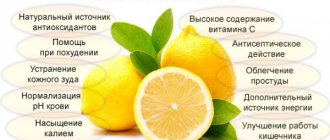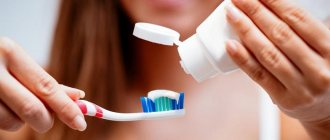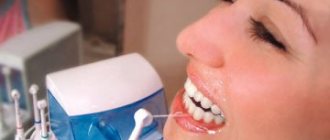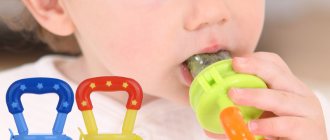When a baby begins to cut teeth, for parents this can be a reason for both joy and sorrow: the baby is capricious, teeth breaking through the gum tissue cause itching, pain and all sorts of discomfort. Special rodents are produced for erupting and growing teeth. Which are called teethers.
general information
This useful device makes life easier for the baby and parents. The baby chews and sucks on a toy made of safe, fairly hard material. In the process, the gums are massaged, the soft tissue is strengthened, and swelling is reduced.
The product for teething children has a different shape. To interest the baby and distract attention from pain and itching, manufacturers offer hundreds of models. The assortment is for every taste: from a simple bright ring to original toys in the shape of a giraffe, fish or flower.
For little ones who cannot part with their pacifier, manufacturers have developed an original teether that resembles a pacifier. Thanks to the fairly durable but elastic material, the baby not only satisfies the need for sucking, but also massages the gums.
The appearance of baby teeth
A child's first teeth appear at 4-5 months of age. The baby becomes whiny, capricious, begins to refuse food, and sleeps restlessly. The process of teething is accompanied by severe pain, itching, fever and inflammatory damage to the gum tissue.
In order to improve the general condition of the baby during this period and significantly reduce the discomfort he experiences, a special orthopedic device is used - a teether.
Five reasons why you should buy chewers for babies:
- massage of sore gums;
- cooling, relieving swelling;
- distraction, anxiety relief;
- positive emotions,
- development of tactile sensations, familiarity with color and sound.
Most modern devices not only ease the baby’s suffering when teething, but also provide knowledge about the world around us. Bright products are made in the shape of animals, plants, and there is even a teething book. The baby is interested, he enthusiastically chews on the toy and, at the same time, massages his swollen gums.
What are the benefits and how to use Miswak teeth cleaning stick?
We have the answer! Read about the specifics of dental endobleaching on this page.
Wooden, silicone or rubber: which teethers to buy
Manufacturers of accessories for children use a wide variety of materials to produce high-quality teethers. The best teethers according to experienced parents:
- silicone teether, which has high rigidity, has no taste or odor and is easy to clean and sterilize;
- wooden teether, characterized by naturalness, environmental safety and durability;
- a soft teether made of rubber or latex (synthetic or natural), characterized not only by its special softness, but also by its flexibility.
Operating principle
The principle is simple:
- when pressure is applied to the gums, blood circulation improves and pain decreases;
- a silicone, rubberized or polypropylene base gently rubs the areas where teeth will soon erupt;
- the cooling gel inside the ring reduces inflammation and has a mild analgesic effect.
Note! Unlike dental gels and painkillers, which the doctor often prescribes during the period of teething, the rodent does not have a harmful effect on the body. The main thing is to buy a device made of non-toxic, high-quality material.
Terms of use
- The teether must be safe for the baby. The guarantee of safety in this case will be a trustworthy manufacturer that complies with all requirements for the production of children's products.
- Choose a teether based on the age and capabilities of the baby. Regardless of the type of teether, it should be “proportional” to the child: it should easily fit in his hand and mouth. In addition, the child should understand what to do with this item, and it should be interesting to “use” it. So, for a three-month-old baby, a complex toy with teethers may still be inaccessible, and for a one-year-old baby, a simple teething rattle is no longer interesting.
- Try different models of teethers within the child's age range. You can never tell in advance which teether your baby will like.
- Don't forget about hygiene rules and clean your teether regularly.
- Don’t be upset if your baby prefers his finger or any other toy to all the newfangled teethers. The most important thing is that the child can get relief during the teething period.
It is not always the case that parents manage to teach their baby to chew on teethers. Some offer children dried, hard vegetables, for example carrots. If the child is not yet receiving complementary foods, it is not advisable to use food for teething purposes. In the end, you can simply temporarily increase control over the cleanliness of all the baby’s toys and hands: let him chew on any rattle or his fist.
We suggest you read: How to choose an electric toothbrush
Svetlana Vakulenko tells how to choose a teether
Whatever accessory you choose, you should follow the manufacturers' recommendations regarding care. Before each use:
- Wash the rodent with children's household chemicals.
- Inspect the teething toy for integrity so that the child does not bite off or swallow part of it.
- Dry items naturally after washing. Do not use batteries or microwave ovens for this purpose.
Types of rodents for babies
Well-known companies producing products for children offer a wide range of “rodents”. Pediatricians recommend that parents buy several devices: the baby will choose what he likes.
Depending on the shape, filler, functionality, the following modifications are distinguished:
- silicone chewer. Product for the youngest children aged 3–5 months. The soft base is non-toxic and gently massages delicate gums. The convenient device is light in weight, has a convenient shape for gripping, and is often made in the shape of a ring;
- teether with water or gel. Product for older children. A useful function is cooling. Cold reduces discomfort and relieves pain in swollen areas. Place the cooling teether in the refrigerator. Do not put the product in the freezer under any circumstances. The frozen gel will gradually numb the gums during the massage;
- pacifier-teether. A useful device for babies who are sensitive to their favorite pacifier. The nipple material is more durable, with pimples and relief stripes;
- teether-rattle. Balls and rings are added to the bright base. The baby not only massages painful areas, but also develops attention and is well distracted. Choose an option with reliable fastening and suitable size of additional parts;
- vibrating rodent. Parents rave about the original teether. The device runs on batteries. The baby squeezes the miracle rodent with his gums, and the “vibration” mode turns on. The baby is happy, unusual sensations and soft vibration massage are a good distraction from unpleasant sensations;
- book with silicone or plastic inserts. Suitable for children who prefer bright pictures and rustling pages. Teethers in the form of toys and rings are attached in several places. An inquisitive child tastes the book, simultaneously massages his gums and enjoys the vivid sensations.
Don't give up on this useful device: the teether has one more advantage. The baby chews on a ring or a giraffe, is distracted, is less capricious, and sleep returns to normal. The baby and parents retain their nerve cells, and the atmosphere in the family is calmer.
Model rating
By compiling this rating, we are in no way trying to put pressure on you with authority or somehow advertise specific models. Dry sales statistics, nothing more.
Avent
For the English Avent line, the price of models starts from three hundred rubles and ends at seven hundred. It includes products designed for all stages of dentition development in the upper and lower jaws. The most expensive of the series have a hermetically sealed helium filler inside to accumulate cold, if necessary.
Kanpol Baby
The Polish teethers called Kanpol Baby stand apart. They can be given to a child as early as a month. Almost all have a sealed cavity filled with water, which allows the products to be pre-cooled before giving to the child.
Price – from 100 to 800 rubles. The former have a simple donut shape, while the latter are animated toothbrushes with silicone or latex bristles. From a very young age, children are taught to use dental hygiene products. May have the shape of a banana, pea pod, etc.
Baby Ono
Baby Ono is another device from Poland. This is a brush that is placed on the parent's finger. Sold in a sealed transparent case. Helps both in massaging the gums and in removing food debris. You can use it from birth, and it costs between 150-180 rubles.
Nuby
American multifunctional bracelet, composite in composition (rubber-plastic). Brightly colored with safe dyes in the mass of the material, it has a set of movable beads, which is convenient for practicing fine motor skills of the baby’s hands. The versatility of the bracelet is also expressed in the fact that it is suitable for use from 3-4 months of a child’s life until the complete eruption of the entire set of teeth.
Pigeon
It has a simple “ring with ears” shape and a laconic design, including color. In the ring-shaped handle, balls roll in the internal tunnels, making ringing sounds. The “ears” are flat, with a relief surface made of silicone. It has no unnecessary details that distract attention, and costs about 350 rubles.
Sophie Woolley - Giraffe
The toy is made in France, made from safe and environmentally friendly rubber, natural and high quality. It has a velvety surface that is pleasant to the touch, imitating mother’s skin. You can give such a toy from the first months of a baby’s life. From three months, he will actively drag it into his mouth and scratch his gums with it, preparing them for the eruption and growth of teeth.
Tiny Love "Flower"
A complex toy in the shape of a dumbbell. Light balls roll and sound in the “handle”. At one end there is a spherical extension with a rattle ball placed in it. At the other end there is a “flower” with ten radial petals made of silicone, which can be sucked and chewed with pleasure, while the other petals rustle funny. The product is intended for babies of all ages, but it is still preferable to give it starting from 7-8 months - the toy is massive. It can cost up to 450 rubles.
Teether Chicco “Cherry”
Italian brand for children in the first months of life. A sealed bunch of silicone cherries contains a gel that is cooled in the refrigerator. Made from wear-resistant, environmentally friendly silicone. Allows freezing, which can be used for both storage and sterilization. Price 320 rubles.
Elephant Philips Avent
Teether in the shape of an elephant, has a hole for a child's hand to grasp, suitable for children from 3 months to a year and older. It is made of heat-resistant and healthy material, which means it can be subjected to heat treatment. Weighs a little, costs up to 550 rubles.
How to choose a good teether
Listen to the recommendations of pediatricians, pay attention to the main points:
- safety. Never save money. Cheap Chinese plastic often peels off and often contains toxic components. Always ask the store for a hygiene certificate; if they refuse, look for another teether with supporting documents;
- interesting shape, nice color. Choose a device of an original shape, made of bright materials, so that the baby is interested. A rattle, a book, fruits and berries, funny animals - a choice for every taste;
- rodent size. An important point that parents often forget about. Too big and heavy will constantly fall out of your hands, a small teether is dangerous - the child can put it completely in his mouth. Also check the integrity of the product: never take the teether if the surface crumbles or the paint peels off;
- age. Select a product according to the age of the little explorer. Silicone models are suitable for babies aged 3–5 months. When cutting through the lateral incisors, you will need to modify the oval shape with a medium degree of rigidity. When the distant teeth are cutting, offer your child a model made of a harder material, a convenient shape, to massage the desired area.
What to look for when choosing a teether
When choosing from the entire assortment, your eyes may wander, which will further complicate the decision-making process. In order to make the right choice, you need to follow the simple rules that are presented below.
- The age of your child . For little ones, you should choose models made of soft material.
- Device form . It is necessary to take into account the stages of teething and choose the most suitable form.
- The material from which it is made . Since this thing will constantly be in your mouth, you should choose the safest materials. Important!
If, after opening the package, the product emits an unpleasant odor, it is not recommended to use it. - Appearance of a “rodent” . Bright colors attract the baby the most, so if it is pale in color, the baby will not show interest in it and will not use it.
- Liquid used for filling . Cooling models have an analgesic effect. But there is a risk that the child will bite through it. You need to choose a product that is filled with water or a safe gel solution.
Using these rules, you can choose the safest teether that will suit your baby.
How to properly give chews to babies
The rules are simple:
- always wash the product with warm water and baby soap, remove any remaining product thoroughly, and wipe dry;
- Place the cooling teether in the refrigerator for 30 minutes. It is forbidden to place the device in the freezer: the material may crumble;
- after use, also rinse the ring, flower or polypropylene giraffe;
- Store the product in a clean box, away from batteries. Never heat a rodent in the microwave, boil it, or put it in the dishwasher.
Important! If the paint wears off and pieces of material fall off, throw away the device without regret: there will be no benefit from the damaged product.
What material is it made from?
Children's toys and accessories are often made from quite unusual materials. First of all, you need to choose products that are safe for your child’s health. These teethers include:
- Silicone is one of the hardest, without a characteristic taste or smell. They are easy to clean and can be sterilized.
- Rubber or latex are quite soft and easy to use and care for.
- Wooden ones are absolutely safe, environmentally friendly and durable. At the same time, these are the toughest teethers, so parents buy such samples quite rarely.
It is IMPORTANT to ask the seller for a quality certificate for the product when purchasing. All children's accessories must be high-quality and genuine copies of the manufacturers.
Comparative characteristics table
A table with the main characteristics of the products from the rating will help you choose a teether based on age or material.
| Product name | Material | Minimum age | Additional effect |
| Panda by Hevea | Natural rubber | From birth | No |
| "Cherry" from Chicco | Rubber | 4 months | Cooling |
| "Lion" by Nuby | Plastic | 3 months | Vibration, cooling |
| “Keys” from Canpol Babies | Plastic | From birth | It's thundering |
| "Crab" from Baby Team | Silicone | 4 months | No |
| "Sophie the Giraffe" from Vulli | Natural rubber | From birth | Squeaks |
| Oball "Bright Orbit" | Plastic | From birth | No |
All models of teethers presented in this rating were carefully selected and fully comply with sanitary standards and safety requirements.









